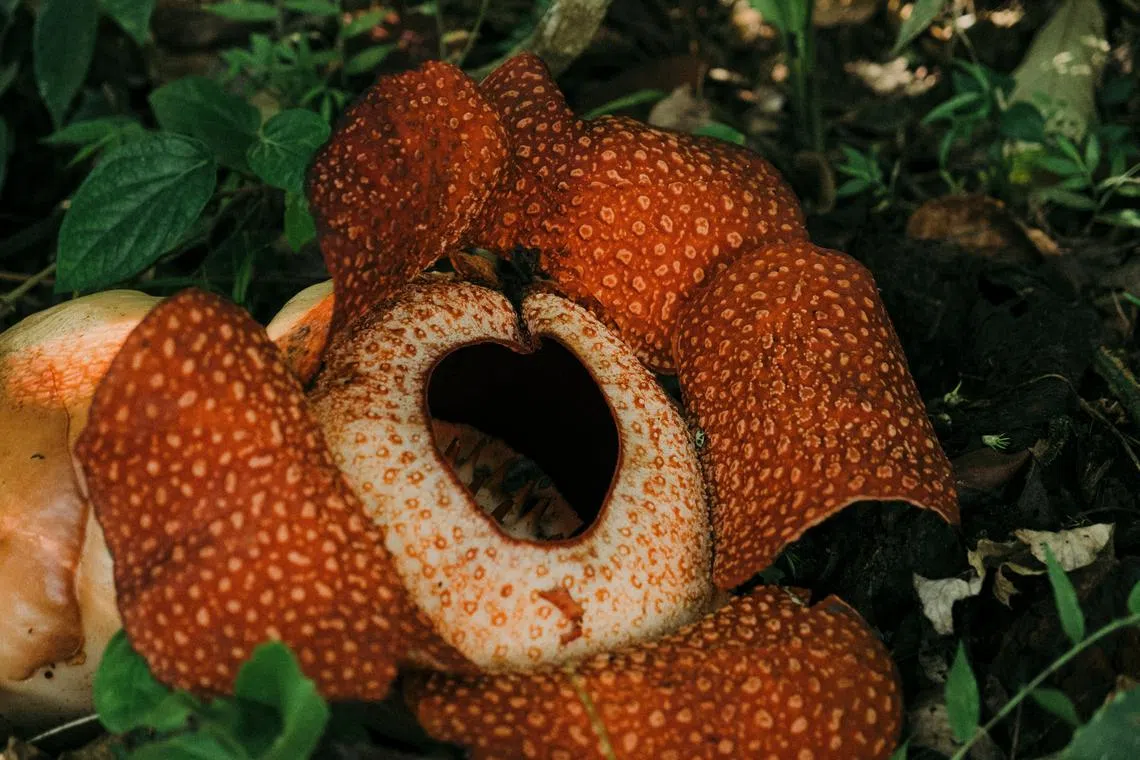Malaysian opposition MP proposes renaming Rafflesia flower to break free of colonial past
Sign up now: Get ST's newsletters delivered to your inbox

Opposition Perikatan Nasional MP Wan Ahmad Fayhsal Wan Ahmad claimed the Rafflesia was named after “a man without morals or ethics”.
PHOTO: UNSPLASH
Follow topic:
A Malaysian Member of Parliament has proposed renaming the Rafflesia, the iconic giant flower, in order to break free of the country’s colonial past.
Opposition Perikatan Nasional MP Wan Ahmad Fayhsal Wan Ahmad, who represents the ward of Machang in the east coast state of Kelantan, also claimed the flower was named after “a man without morals or ethics”.
He brought the issue up during a parliamentary debate on Aug 19 and urged Acting Natural Resources and Environmental Sustainability Minister Johari Abdul Ghani to raise it in Cabinet.
“In conjunction with Malaysia’s 68th National Day, and in the spirit of the Prime Minister who urges us to view our history beyond the colonial framework, could the minister use his powers under the ministry to rename Malaysia’s largest flower, the Rafflesia?” asked Mr Wan Ahmad Fayhsal.
Malaysia will celebrate its national day on Aug 31.
“The name was taken from Stamford Raffles, our coloniser, a man without morals or ethics. Yet, we gave such a beautiful name to our flower,” said Mr Wan Ahmad Fayhsal.
He said Malaysia should not remain under the shadow of its colonial legacy, especially after 68 years of independence.
He jokingly suggested renaming the flower after Prime Minister Anwar Ibrahim, saying it will not be a problem, “as long as it is better”.
In response, Datuk Seri Johari said he would take note of Mr Wan Ahmad Fayhsal’s suggestion.
“If you have any name suggestions, please put them forward,” he said in jest.
Mr Wan Ahmad Fayhsal’s proposal did not sit well with retired academic Ghazally Ismail. The former deputy vice-chancellor for research and services at Universiti Malaysia Sarawak was one of the prime movers in the establishment in 1967 of a Rafflesia forest reserve in Sabah’s Crocker Range.
Professor Ghazally said any attempts to change the flower’s name in the name of “decolonisation” only reflect a lack of understanding of scientific classification.
“Rafflesia is not a brand. It is not a street name. It is the scientific name of a genus of parasitic flowering plants found right here in South-east Asia,” he said in a Facebook post.
“Changing the name Rafflesia doesn’t decolonise anything. It just announces to the world that you have no idea how scientific classification works.”
The Rafflesia is one of the largest flowers in the world.
It was discovered by Sir Stamford Raffles and Dr Joseph Arnold in Indonesia in the early 19th century.
Sometimes referred to as corpse flower, the plant mimics the stench of rotting meat to attract insects.
It is mainly found in the tropical rainforests of Borneo, Indonesia, Peninsular Malaysia, Thailand and the Philippines.


